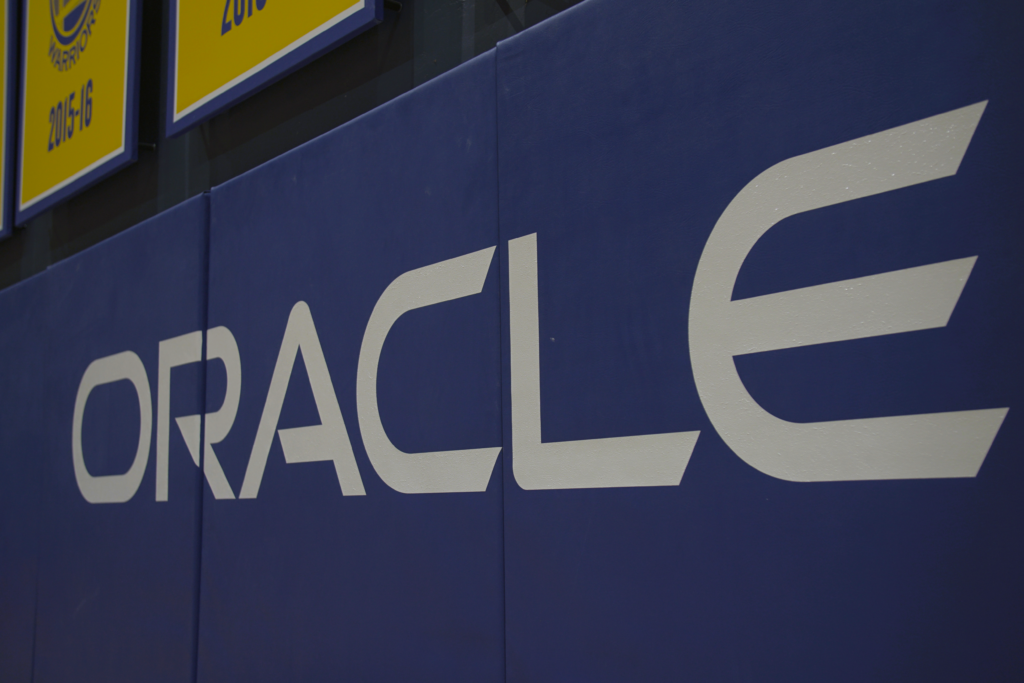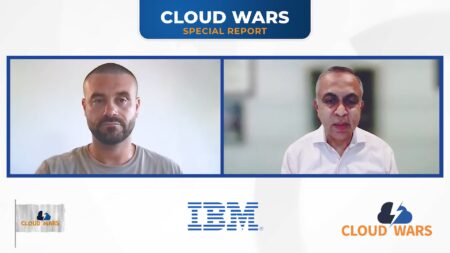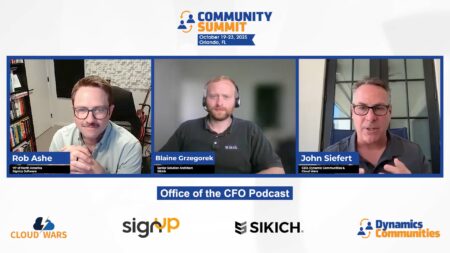While much smaller than the major cloud players, Oracle made a powerful case last week that if it hasn’t yet displaced Google Cloud as the world’s hottest cloud provider, it very well might do so in the next six months.
On my weekly Cloud Wars Top 10 rankings, Oracle is #6 and Google Cloud is #3.
Consider these highlights for the 3 months ended Nov. 30:
- Oracle Fusion cloud-apps revenue was up 30%;
- Oracle’s cloud-infrastructure revenue was up more than 50%; and
- consumption revenue for that Oracle Cloud Infrastructure business was up 86%.
Pretty impressive, right? But in light of those big numbers, why did Oracle say that its overall cloud business grew 22% for the quarter? We’ll get to that riddler in a minute.
We first need to recognize that it is, of course, easier to post gaudy growth numbers when the base level of your revenue is not all that large, as is the case with Oracle: CEO Safra Catz said those impressive growth rates pushed annualized cloud revenue to $10.7 billion. Microsoft’s cloud business is 8X larger than Oracle’s, Amazon’s is 6X larger, and Google’s is 2X larger.
But scale aside, compare those Oracle numbers highlighted above to the Q3 growth rate of 45% posted a month ago by Google Cloud, which led me to conclude that Alphabet CEO Nails It: Why Google Is World’s Hottest Cloud Provider.
In light of Oracle’s latest performance, can a case be made that its primary cloud revenue numbers—Fusion apps up 30%, OCI up more than 50%, and OCI consumption revenue up 86%—make Oracle an even hotter cloud provider than Google Cloud?
As Google Cloud CEO Thomas Kurian said 3 years ago when he assumed that role and was asked how he felt about being so far behind Microsoft and Amazon, the world is profoundly different today that it was 2 or 3 years ago, and what customers want from the cloud today is certainly different as well than it was way back then.
In the context of Oracle’s stellar earnings report, Kurian’s perspective would seem to apply to Oracle as well because right here and right now, and without regard to what has happened in the cloud over the past handful of years, Oracle is winning lots of customers for lots of different types of deals involving lots of different types of cloud services.
Two more critical points underscore why Oracle’s cloud business has become a powerful force to be reckoned with:
- on the Dec. 9 earnings call, Catz said the growth rates mentioned above—30% for Fusion apps and 50%-plus for cloud infrastructure—are expected to rise over the next 6 months in the second half of Oracle’s fiscal year; and
- the marketplace rewarded Oracle’s numbers with a tremendous vote of confidence by driving Oracle shares to all-time highs, with the company’s market cap now around $280 billion.
I can imagine that at this point you might be saying, “Okay, Evans, get off the fence and make a call—has Oracle actually displaced Google Cloud as the world’s hottest cloud provider??”
And the best I can tell you is “Maybe.”
And that’s because of that puzzling 22% cloud growth rate Oracle reported for the quarter.
In spite of the 3 gaudy growth numbers cited above—30% for apps, 50%+ for infrastructure, and 86% for infrastructure consumption revenue—Catz said this in her opening remarks on the earnings call, and I’ve put the key words in bold italics: “Total cloud revenues when annualized are now $10.7 billion and grew 22%, with cloud bookings growing faster than our cloud revenue growth rate. And as a result, we expect cloud revenue will accelerate further and exit the fiscal year in the mid-20s, potentially higher.”
So I am officially confused: how do you post growth rates of 30%, 50%+, and 86% in key segments only to have the aggregate cloud growth rate be 22%?
While nobody would ever mistake me for a math prodigy, it seems rather obvious to me that some undisclosed parts of Oracle’s cloud business must have finished the quarter with unimpressive revenue-growth results, and that those must have been low enough to pull the component pieces that were released—30%, 50%+, and 86%—down to a cumulative 22%.
The only educated guess of any kind I can make is that the revenue results from Oracle’s “legacy hosting services” are causing the drag. In her detailed rollout of cloud numbers, Catz said this about the infrastructure business: “And excluding legacy hosting services, infrastructure cloud services grew more than 50%. I expect the infrastructure revenue growth rate will continue to ramp higher through the fiscal year. OCI consumption revenue, which includes autonomous database, was up 86% in constant currency.” Could that “excluding legacy hosting services” represent a performance so weak that it pulled the total cloud growth rate down to 22%? Anything’s possible, but I sure don’t think that’s the cause.
It’s also possible that I’ve simply missed something, and perhaps I’m just not reading and classifying the numbers properly. That’s possible, but Oracle laid everything out pretty clearly so I don’t think that’s the case.
Final thought
So I’m going to look into this and share what I find with all of you. Until then, while it’s beyond question that Oracle’s fiscal-Q2 results were outstanding, and that its Fusion apps business and OCI infrastructure business are on fire, I cannot bestow the title of “world’s hottest cloud provider” on Oracle until we get some clarity on that 22% total.
Until then, Google Cloud remains the hottest of the Cloud Wars Top 10, which are the companies driving the greatest growth market the world has ever known.








